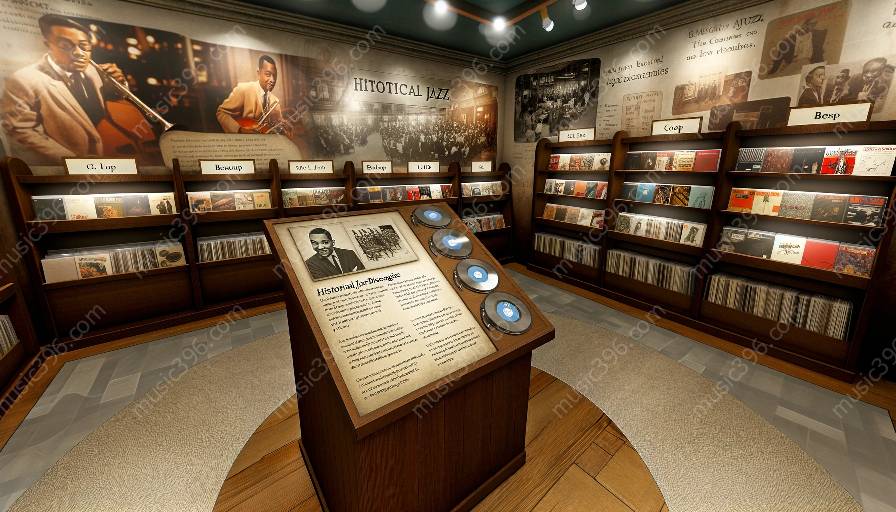Jazz, a music genre with roots in African American communities, has had a significant impact on popular culture, influencing film, literature, and art. The portrayal of jazz in film and literature reflects the unique qualities of this music genre and provides insight into its cultural significance. In this article, we will explore the portrayal of jazz in film and literature, its connection to jazz discography and jazz studies, and its impact on popular culture and artistic expression.
Jazz in Film
Film has been a powerful medium for capturing the essence of jazz music and its cultural context. From classic Hollywood movies to independent films, jazz has been depicted in various forms, reflecting different eras and styles of the genre. Some films, such as 'Round Midnight' and 'Bird,' are biographical portrayals of legendary jazz musicians, offering audiences a glimpse into the lives and struggles of these iconic figures. Other films, like 'La La Land' and 'Whiplash,' highlight the influence of jazz on contemporary music and the challenges faced by aspiring jazz performers.
Jazz in film not only serves as a soundtrack but also as a narrative device, shaping the mood and atmosphere of a story. The improvisational nature of jazz music often mirrors the unpredictability and complexity of human emotions, making it a compelling element in cinematic storytelling. Jazz has been used to convey a wide range of emotions, from romance and nostalgia to tension and exhilaration, showcasing its versatility as a form of artistic expression.
Jazz in Literature
Literature, like film, has embraced jazz as a thematic element, incorporating its rhythms and ethos into the narratives of novels, poems, and plays. Writers such as Langston Hughes, Toni Morrison, and Jack Kerouac have infused their works with the spirit of jazz, capturing the energy and vitality of the music through vivid descriptions and rhythmic prose. Jazz literature often explores themes of improvisation, collaboration, and individuality, reflecting the core values of the jazz ethos.
Moreover, jazz has inspired a subgenre of literature known as jazz poetry—a style that mirrors the syncopated rhythms and spontaneous creativity of jazz music. Jazz poetry, characterized by its free verse and experimental language, offers readers an immersive experience that parallels the improvisational nature of jazz performances. Through the use of imagery, metaphors, and syncopated language, jazz poetry creates a sensory experience that mirrors the sonic textures of jazz music.
Connection to Jazz Discography
The portrayal of jazz in film and literature is closely interconnected with jazz discography, as the music featured in movies and referenced in literary works often draws from a rich tapestry of jazz recordings. Jazz discography, encompassing a vast array of albums and compositions, provides a soundtrack for the narratives that unfold on screen and on the pages of literary works. The fusion of jazz with visual and textual mediums allows for the exploration of jazz's historical evolution, stylistic diversity, and cultural impact.
Furthermore, jazz discography serves as a resource for scholars and enthusiasts studying the intersection of jazz with other art forms. By analyzing the recordings that accompany jazz-themed films and literary works, researchers can gain a deeper understanding of how jazz music has been interpreted and reimagined in different contexts. This exploration of jazz discography in relation to its portrayal in film and literature contributes to a holistic understanding of jazz as both a musical genre and a cultural phenomenon.
Impact on Popular Culture and Artistic Expression
The portrayal of jazz in film and literature has had a lasting impact on popular culture, shaping perceptions of the music and its cultural significance. Through compelling storytelling and aesthetic representations, jazz has been celebrated as a source of inspiration and a catalyst for social change. The depiction of jazz musicians as complex characters with distinctive voices and identities has contributed to a more nuanced understanding of jazz as an art form with profound emotional and political dimensions.
Moreover, the portrayal of jazz in film and literature has inspired artists from diverse disciplines to engage with jazz themes in their creative endeavors. Visual artists, choreographers, and playwrights have drawn inspiration from jazz narratives, using the music as a source of inspiration for their own works. This cross-pollination of artistic expression has enriched the cultural landscape, fostering a dynamic exchange of ideas and influences that transcend traditional boundaries.
Conclusion
The portrayal of jazz in film and literature offers a multifaceted exploration of the music's cultural, social, and artistic dimensions. By delving into the narratives, characters, and themes that intersect with jazz, audiences can gain a deeper appreciation for the music's enduring legacy and its influence on popular culture. Whether through the evocative imagery of jazz-infused novels or the dynamic soundscapes of jazz-themed films, the portrayal of jazz in film and literature continues to captivate audiences and inspire new generations of artists and storytellers.





























